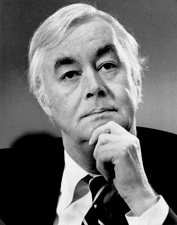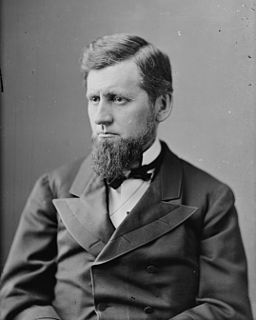Class 1 Class 1 U.S. Senators belong to the electoral cycle that were elected for only one U.S. Congress in the first elections of 1788/89, and then the seat was contested again for the 2nd, 5th, and every three Congresses (six years) thereafter. The seat in recent years have been contested in 1994, 2000, 2006, 2012, 2018, with a special election taking place in 2010. The next election will be in 2024. | C
o
n
g
r
e
s
s | Class 3 Class 3 U.S. Senators belong to the electoral cycle that were elected for the first three United States Congresses in the first elections of 1788/89, and then the seat was contested again for the 4th, 7th, and every three Congresses (six years) thereafter. The seat in recent years have been contested in 1998, 2004, 2010, and 2016. The next election will be in 2022. |
|---|
| # | Senator | Party | Years in office | Electoral history | T
e
r
m | T
e
r
m | Electoral history | Years in office | Party | Senator | # |
|---|
| 1 | 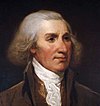
Philip Schuyler | Pro-
Admin. | July 27, 1789 –
March 3, 1791 | Elected in 1789.
Lost re-election. | 1 | 1st | 1 | Elected in 1789. | July 25, 1789 –
May 23, 1796 | Pro-
Admin. | 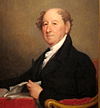
Rufus King | 1 |
|---|
| 2 | 
Aaron Burr | Anti-
Admin. | March 4, 1791 –
March 3, 1797 | Elected in 1791.
Lost re-election. | 2 | 2nd |
|---|
| 3rd |
Democratic-
Republican | 4th | 2 | Re-elected in 1795.
Resigned to become U.S. Minister to Great Britain. | Federalist |
| Vacant | May 23, 1796 –
December 8, 1796 | Vacant |
Elected to finish King's term.
Resigned. | December 8, 1796 –
August 1800 | Federalist | 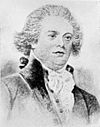
John Laurance | 2 |
|---|
| 3 | 
Philip Schuyler | Federalist | March 4, 1797 –
January 3, 1798 | Elected in 1797.
Resigned due to ill health. | 3 | 5th |
|---|
| Vacant | January 3, 1798 –
January 11, 1798 | Vacant |
| 4 | 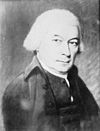
John Sloss Hobart | Federalist | January 11, 1798 –
April 16, 1798 | Elected to finish Schuyler's term.
Resigned to become federal judge. |
|---|
| Vacant | April 16, 1798 –
May 5, 1798 | Vacant |
| 5 | 
William North | Federalist | May 5, 1798 –
August 17, 1798 | Appointed to continue Hobart's term.
Successor elected. |
|---|
| 6 | 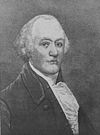
James Watson | Federalist | August 17, 1798 –
March 19, 1800 | Elected to finish Hobart's term.
Resigned to become Naval Officer of the Port of New York. |
|---|
| 6th |
| Vacant | March 19, 1800 –
May 3, 1800 | Vacant |
| 7 | 
Gouverneur Morris | Federalist | May 3, 1800 –
March 3, 1803 | Elected to finish Watson's term.
Lost re-election. |
|---|
| Vacant | August 1800 –
January 8, 1801 | Vacant |
| Elected to finish Laurance's term. | January 8, 1801 –
February 5, 1802 | Democratic-
Republican | 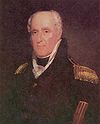
John Armstrong, Jr. | 3 |
|---|
| 7th | 3 | Re-elected January 27, 1801.
Resigned. |
| Vacant | February 5, 1802 –
February 23, 1802 | Vacant |
Elected to finish Armstrong's term.
Resigned; unhappy with living conditions in Washington, DC. | February 23, 1802 –
November 4, 1803 | Democratic-
Republican | 
DeWitt Clinton | 4 |
|---|
| 8 | 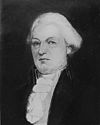
Theodorus Bailey | Democratic-
Republican | March 4, 1803 –
January 16, 1804 | Elected in 1803.
Resigned. | 4 | 8th |
|---|
| Vacant | November 4, 1803 –
December 8, 1803 | Vacant |
Appointed to continue Clinton's term.
Resigned; Elected to the Class 1 seat. | December 8, 1803 –
February 23, 1804 | Democratic-
Republican | 
John Armstrong, Jr. | 5 |
|---|
| Vacant | January 16, 1804 –
February 25, 1804 | Vacant |
| Elected to finish Armstrong's term. | February 23, 1804 –
March 3, 1813 | Democratic-
Republican | 
John Smith | 6 |
|---|
| 9 | 
John Armstrong, Jr. | Democratic-
Republican | February 25, 1804 –
June 30, 1804 | Elected to finish Bailey's term.
Resigned to become U.S. Minister to France. |
|---|
| Vacant | June 30, 1804 –
November 23, 1804 | Vacant |
| 10 | 
Samuel L. Mitchill | Democratic-
Republican | November 23, 1804 –
March 3, 1809 | Elected to finish Armstrong's term.
Lost re-election. |
|---|
| 9th |
| 10th | 4 | Re-elected in 1807.
Retired or lost re-election. |
| 11 | Obadiah German | Democratic-
Republican | March 4, 1809 –
March 3, 1815 | Elected in 1809.
Retired or lost re-election. | 5 | 11th |
|---|
| 12th |
| 13th | 5 | Elected in 1813.
Legislature failed to elect. | March 4, 1813 –
March 3, 1819 | Federalist | 
Rufus King | 7 |
|---|
| 12 | 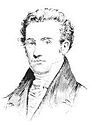
Nathan Sanford | Democratic-
Republican | March 4, 1815 –
March 3, 1821 | Elected in 1815.
Lost re-election. | 6 | 14th |
|---|
| 15th |
| 16th | 6 | Vacant | March 4, 1819 –
January 25, 1820 | Vacant |
Re-elected late.
Retired due to advanced age. | January 25, 1820 –
March 3, 1825 | Federalist | 
Rufus King |
| 13 | 
Martin Van Buren | Democratic-
Republican
/ Bucktails | March 4, 1821 –
December 20, 1828 | Elected in 1821. | 7 | 17th |
|---|
Crawford
Democratic-
Republican | 18th | Adams-Clay
Federalist |
| Jacksonian | 19th | 7 | Legislature failed to elect. | March 4, 1825 –
January 31, 1826 | Vacant |
Elected late.
Retired. | January 31, 1826 –
March 3, 1831 | Anti-Jacksonian | 
Nathan Sanford | 8 |
|---|
Re-elected in 1827.
Resigned to become N.Y. Governor. | 8 | 20th |
| Vacant | December 20, 1828 –
January 15, 1829 | Vacant |
| 14 | 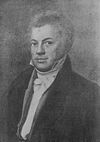
Charles E. Dudley | Jacksonian | January 15, 1829 –
March 3, 1833 | Elected to finish Van Buren's term.
Retired or lost re-election. |
|---|
| 21st |
| 22nd | 8 | Elected in 1831.
Resigned; elected N.Y. Governor. | March 4, 1831 –
January 1, 1833 | Jacksonian | 
William L. Marcy | 9 |
|---|
| Vacant | January 1, 1833 –
January 14, 1833 | Vacant |
| Elected to finish Marcy's term. | January 4, 1833 –
November 26, 1844 | Jacksonian | 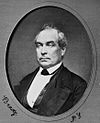
Silas Wright, Jr. | 10 |
|---|
| 15 | 
Nathaniel P. Tallmadge | Jacksonian | March 4, 1833 –
March 3, 1839 | Elected in 1833.
Legislature failed to re-elect. | 9 | 23rd |
|---|
| 24th |
| Democratic | 25th | 9 | Re-elected in 1837. | Democratic |
| Vacant | March 4, 1839 –
January 27, 1840 | Vacant | 10 | 26th |

Nathaniel P. Tallmadge | Whig | January 27, 1840 –
June 17, 1844 | Elected late.
Resigned to become Governor of Wisconsin Territory. |
| 27th |
| 28th | 10 | Re-elected in 1843.
Resigned when elected N.Y. Governor. |
| Vacant | June 17, 1844 –
December 9, 1844 | Vacant |
| Vacant | November 26, 1844 –
November 30, 1844 | Vacant |
Appointed to continue Wright's term.
Retired or lost election. | November 30, 1844 –
January 27, 1845 | Democratic |  Henry A. Foster Henry A. Foster | 11 |
|---|
| 16 | 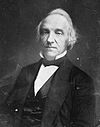
Daniel S. Dickinson | Democratic | December 9, 1844 –
March 3, 1851 | Appointed to continue Tallmadge's term.
Elected to finish Tallmadge's term. |
|---|
Elected to finish Wright's term.
Lost re-election. | January 27, 1845 –
March 3, 1849 | Democratic | 
John Adams Dix | 12 |
|---|
Elected to full term in 1845.
Lost re-election. | 11 | 29th |
| 30th |
| 31st | 11 | Elected in 1849. | March 4, 1849 –
March 3, 1861 | Whig | 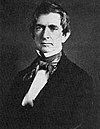
William H. Seward | 13 |
|---|
| Vacant | March 4, 1851 –
December 1, 1851 | Vacant | 12 | 32nd |
| 17 | 
Hamilton Fish | Whig | December 1, 1851 –
March 3, 1857 | Elected late.
Retired. |
|---|
| 33rd |
| 34th | 12 | Re-elected in 1855. [1]
Retired to run for U.S. President | Republican [1] |
| 18 | 
Preston King | Republican | March 4, 1857 –
March 3, 1863 | Elected in 1857.
Lost renomination. | 13 | 35th |
|---|
| 36th |
| 37th | 13 | Elected in 1861.
Lost re-nomination. | March 4, 1861 –
March 3, 1867 | Republican | 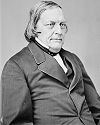
Ira Harris | 14 |
|---|
| 19 | 
Edwin D. Morgan | Republican | March 4, 1863 –
March 3, 1869 | Elected in 1863.
Lost re-nomination. | 14 | 38th |
|---|
| 39th |
| 40th | 14 | Elected in 1867. | March 4, 1867 –
May 16, 1881 | Republican | 
Roscoe Conkling | 15 |
|---|
| 20 | 
Reuben Fenton | Republican | March 4, 1869 –
March 3, 1875 | Elected in 1869.
Not an active candidate for renomination in 1875. [2] | 15 | 41st |
|---|
| 42nd |
| 43rd | 15 | Re-elected in 1873. |
| 21 | 
Francis Kernan | Democratic | March 4, 1875 –
March 3, 1881 | Elected in 1875.
Lost re-election. | 16 | 44th |
|---|
| 45th |
| 46th | 16 | Re-elected in 1879.
Resigned because of a disagreement with the President over federal appointments in New York. |
| 22 | 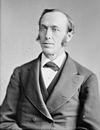
Thomas C. Platt | Republican | March 4, 1881 –
May 16, 1881 | Elected in 1881.
Resigned because of a disagreement with the President over federal appointments in New York. | 17 | 47th |
|---|
| Vacant | May 16, 1881 –
July 27, 1881 | Vacant | Vacant | May 16, 1881 –
July 29, 1881 | Vacant |
| 23 | 
Warner Miller | Republican | July 27, 1881 –
March 3, 1887 | Elected to finish Platt's term.
Lost re-election. | Elected to finish Conkling's term.
Retired. | July 29, 1881 –
March 3, 1885 | Republican | 
Elbridge G. Lapham | 16 |
|---|
| 48th |
| 49th | 17 | Elected in 1885.
Lost re-election. | March 4, 1885 –
March 3, 1891 | Republican | 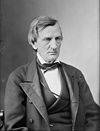
William M. Evarts | 17 |
|---|
| 24 | 
Frank Hiscock | Republican | March 4, 1887 –
March 3, 1893 | Elected in 1887.
Lost re-election. | 18 | 50th |
|---|
| 51st |
| 52nd | 18 | Vacant | March 4, 1891 –
January 7, 1892 | Vacant |
Elected in 1891, but took his seat only after term as N.Y. Governor ended.
Lost re-election. | January 7, 1892 –
March 3, 1897 | Democratic | 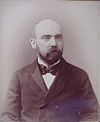
David B. Hill | 18 |
|---|
| 25 | 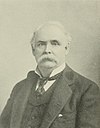
Edward Murphy, Jr. | Democratic | March 4, 1893 –
March 3, 1899 | Elected in 1893.
Lost re-election. | 19 | 53rd |
|---|
| 54th |
| 55th | 19 | Elected January 20, 1897. | March 4, 1897 –
March 3, 1909 | Republican | 
Thomas C. Platt | 19 |
|---|
| 26 | 
Chauncey Depew | Republican | March 4, 1899 –
March 3, 1911 | Elected in 1899. | 20 | 56th |
|---|
| 57th |
| 58th | 20 | Re-elected January 20, 1903.
Retired. |
Re-elected in 1905.
Lost re-election. | 21 | 59th |
| 60th |
| 61st | 21 | Elected January 19, 1909.
Retired. | March 4, 1909 –
March 3, 1915 | Republican | 
Elihu Root | 20 |
|---|
| Vacant | March 3, 1911 –
April 4, 1911 | Vacant | 22 | 62nd |
| 27 | 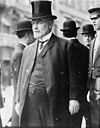
James A. O'Gorman | Democratic | April 4, 1911 –
March 3, 1917 | Elected March 31, 1911.
Retired. |
|---|
| 63rd |
| 64th | 22 | Elected in 1914. | March 4, 1915 –
March 3, 1927 | Republican | 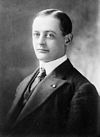
James W. Wadsworth, Jr. | 21 |
|---|
| 28 | 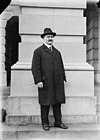
William M. Calder | Republican | March 4, 1917 –
March 3, 1923 | Elected in 1916.
Lost re-election. | 23 | 65th |
|---|
| 66th |
| 67th | 23 | Re-elected in 1920.
Lost re-election. |
| 29 | 
Royal S. Copeland | Democratic | March 4, 1923 –
June 17, 1938 | Elected in 1922. | 24 | 68th |
|---|
| 69th |
| 70th | 24 | Elected in 1926. | March 4, 1927 –
June 28, 1949 | Democratic | 
Robert F. Wagner | 22 |
|---|
| Re-elected in 1928. | 25 | 71st |
| 72nd |
| 73rd | 25 | Re-elected in 1932. |
Re-elected in 1934.
Died. | 26 | 74th |
| 75th |
| Vacant | June 17, 1938 –
December 3, 1938 | Vacant |
| 30 | 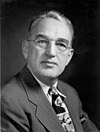
James M. Mead | Democratic | December 3, 1938 –
January 3, 1947 | Elected to finish Copeland's term. |
|---|
| 76th | 26 | Re-elected in 1938. |
Re-elected in 1940.
Retired to run for N.Y. Governor. | 27 | 77th |
| 78th |
| 79th | 27 | Re-elected in 1944.
Resigned due to ill health. |
| 31 | 
Irving M. Ives | Republican | January 3, 1947 –
January 3, 1959 | Elected in 1946. | 28 | 80th |
|---|
| 81st |
| Vacant | June 28, 1949 –
July 7, 1949 | Vacant |
Appointed to continue Wagner's term.
Lost election to finish Wagner's term. | July 7, 1949 –
November 8, 1949 | Republican | 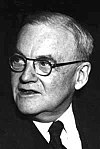
John Foster Dulles | 23 |
|---|
| Elected to finish Wagner's term. | November 9, 1949 –
January 3, 1957 | Democratic | 
Herbert H. Lehman | 24 |
|---|
| 82nd | 28 | Re-elected in 1950.
Retired. |
Re-elected in 1952.
Retired. | 29 | 83rd |
| 84th |
| 85th | 29 | Vacant | January 3, 1957 –
January 9, 1957 | Vacant |
| Elected in 1956, but took seat late to prevent the Governor from appointing a rival to be his successor as N.Y. Attorney General | January 9, 1957 –
January 3, 1981 | Republican | 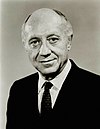
Jacob Javits | 25 |
|---|
| 32 | 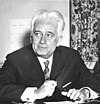
Kenneth Keating | Republican | January 3, 1959 –
January 3, 1965 | Elected in 1958.
Lost re-election. | 30 | 86th |
|---|
| 87th |
| 88th | 30 | Re-elected in 1962. |
| 33 | 
Robert F. Kennedy | Democratic | January 3, 1965 –
June 6, 1968 | Elected in 1964.
Died. | 31 | 89th |
|---|
| 90th |
| Vacant | June 6, 1968 –
September 10, 1968 | Vacant |
| 34 | 
Charles Goodell | Republican | September 10, 1968 –
January 3, 1971 | Appointed to finish Kennedy's term.
Lost election to a full term. |
|---|
| 91st | 31 | Re-elected in 1968. |
| 35 | 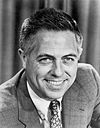
James L. Buckley | Conservative | January 3, 1971 –
January 3, 1977 | Elected in 1970.
Lost re-election. | 32 | 92nd |
|---|
| 93rd |
| 94th | 32 | Re-elected in 1974.
Lost renomination and then lost re-election as a Liberal. |
| 36 | 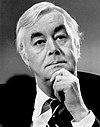
Daniel Patrick Moynihan | Democratic | January 3, 1977 –
January 3, 2001 | Elected in 1976. | 33 | 95th |
|---|
| 96th |
| 97th | 33 | Elected in 1980. | January 3, 1981 –
January 3, 1999 | Republican | 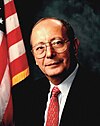
Al D'Amato | 26 |
|---|
| Re-elected in 1982. | 34 | 98th |
| 99th |
| 100th | 34 | Re-elected in 1986. |
| Re-elected in 1988. | 35 | 101st |
| 102nd |
| 103rd | 35 | Re-elected in 1992.
Lost re-election. |
Re-elected in 1994.
Retired. | 36 | 104th |
| 105th |
| 106th | 36 | Elected in 1998. | January 3, 1999 –
Present | Democratic | 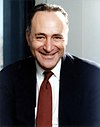
Chuck Schumer | 27 |
|---|
| 37 | 
Hillary Clinton | Democratic | January 3, 2001 –
January 21, 2009 | Elected in 2000. | 37 | 107th |
|---|
| 108th |
| 109th | 37 | Re-elected in 2004. |
Re-elected in 2006.
Resigned to become U.S. Secretary of State. | 38 | 110th |
| 111th |
| Vacant | January 21, 2009 –
January 25, 2009 | Vacant |
| 38 | 
Kirsten Gillibrand | Democratic | January 25, 2009 –
Present | Appointed to continue Clinton's term.
Elected to finish Clinton's term. |
|---|
| 112th | 38 | Re-elected in 2010. |
| Re-elected in 2012. | 39 | 113th |
| 114th |
| 115th | 39 | Re-elected in 2016. |
| Re-elected in 2018. | 40 | 116th |
| 117th |
| 118th | 40 | To be determined in the 2022 election. |
| To be determined in the 2024 election. | 119th |
| # | Senator | Party | Years in office | Electoral history | T
e
r
m | | T
e
r
m | Electoral history | Years in office | Party | Senator | # |
|---|
| Class 1 | Class 3 |
|---|

































































